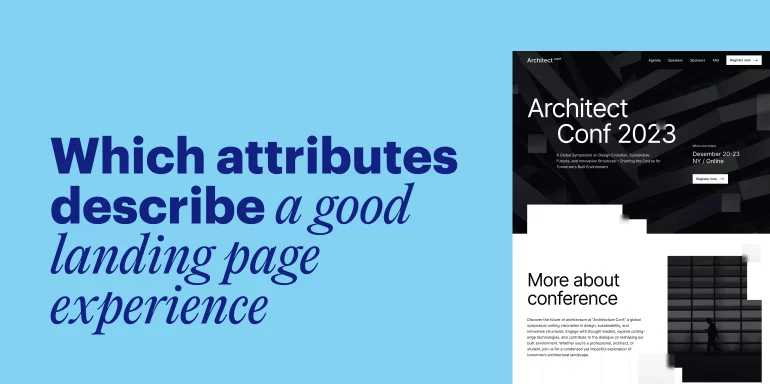Many marketers may not know this, but Google judges every landing page you create and connect to a PPC ad—search and display. The search engine giant assesses the quality of your landing pages based on visitors’ on-page experience.
It works like this: when a user clicks through to your landing page from a PPC ad Google ranks and rewards you based on what the user sees and experiences once they’re on the page.
The rank your page is awarded is pre-determined by a handful of page attributes based on how the user interacts with the page If the search engine concludes that your landing page experience wasn’t satisfactory, it’ll be less likely to show your ads, leading to fewer ad clicks and ultimately lower conversions.
In other words, landing page experience is one of the key factors impacting your Google Ads Quality Score, which, in turn, affects your required bid for an ad and your overall business growth.
So, how do you ensure your landing page gives users a positive experience and results in conversions? It’s all about understanding and improving your Quality Score and becoming more resourceful with your ad budget.
Let’s find out more, starting with PPC ads and landing pages.
Why should you connect PPC ads to landing pages?
Although you can connect your PPC ads to your homepage, this move, however, won’t help you with conversions or delivering a good landing page experience, because unlike landing pages, homepages are created for browsing experience.
When your ads lead visitors to relevant landing pages you increase the likelihood of getting conversions and here’s why:
- A focused experience increases the chance of conversions. When potential customers click on your PPC ad, they show interest in the product or service you promote. Directing them to a dedicated landing page instead of your busy homepage makes more sense simply because you will provide your prospects with a focused experience that matches the promise made in the ad.
Whether it’s to gather contact details, sell a product, or sign up for a webinar, high-converting landing pages are designed specifically to guide visitors toward the call to action without any unnecessary distractions.
- Gather in-depth analytics from best-performing ads and pages. With landing pages, you can be more efficient with tracking and data collection. Using analytics, you can identify which ads bring in the most traffic, which landing pages are top performers, and where your conversions happen. Based on this data, you can optimize both halves of your conversion funnel for better performance.
- Ad and landing page message match improves ad spend and results in better ad positions. Google assesses the relevance of your landing page based on the keywords you bid on and the ad copy you use. Matching the content of an ad to the content of a landing page reinforces your message in the minds of your prospects so that they know it’s relevant. This leads to a higher Quality Score, which, in turn, results in a lower cost per click and better ad placement.
The example below demonstrates a message match between an ad and a homepage, both promoting Bright Data, a service for retail data collection:

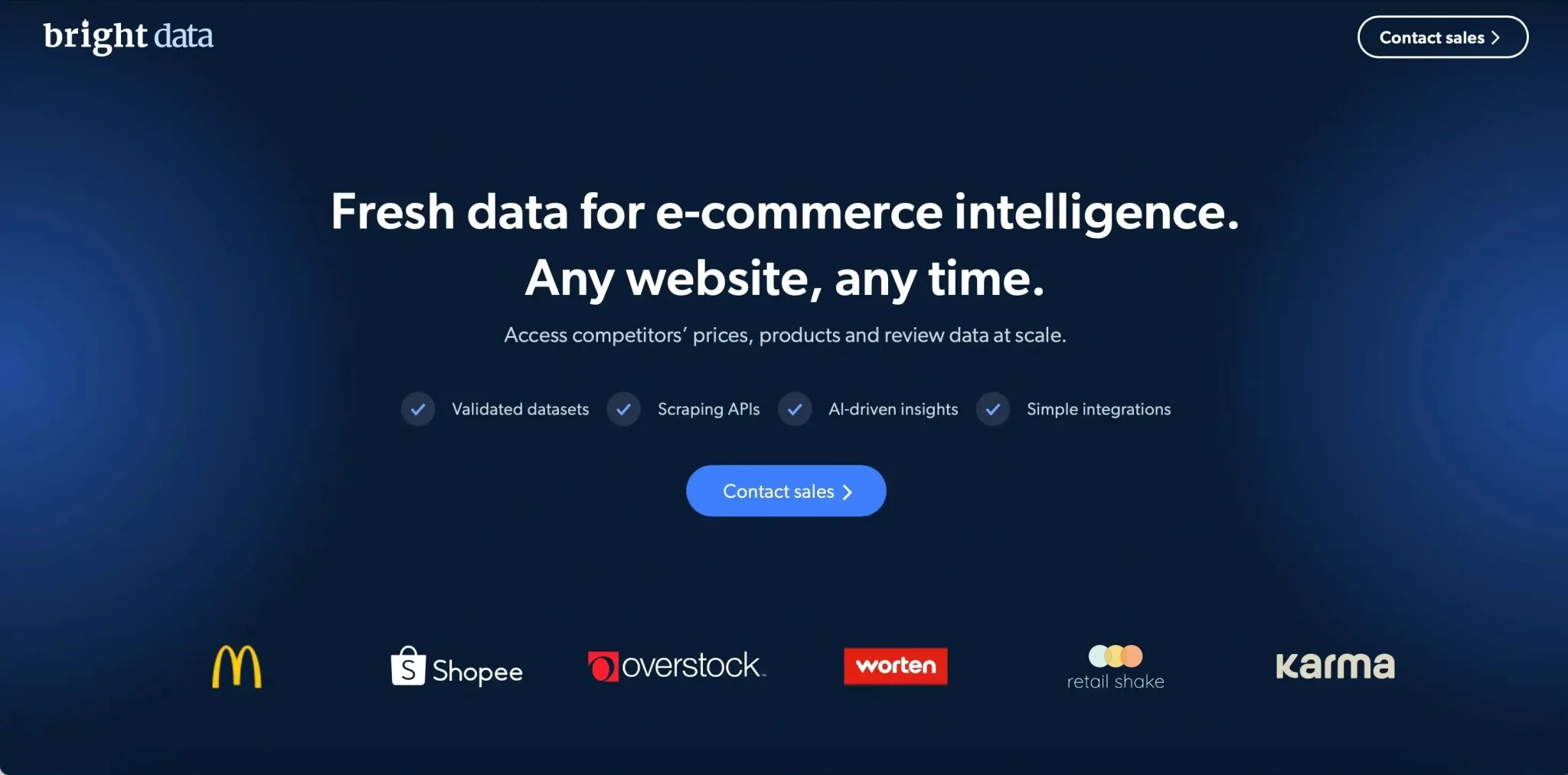
What’s a good landing page experience (according to Google)?
A good landing page experience is a critical factor not just for your visitors but also for your Google rankings. According to Google, a good landing page experience comprises a number of factors, such as usefulness and relevance of the landing page content, great UI,easy-to-use navigation, number of links, and matching user expectations once they land on the page after clicking an ad.
Let’s take a look at each of these factors individually:
- Usefulness and relevance of the landing page content. When visitors arrive at your page after they’ve clicked the ad, they should find exactly what was promised—whether that’s a product, service, or a discount offer. The relevancy of the ad and the landing page ensures that your page meets the specific needs of your users and directly answers their search query, leading to a satisfactory experience.
- Navigational simplicity. A good landing page should be easy to navigate, meaning the user doesn’t have to click multiple links to find what they need. Google favors pages with intuitive navigation and a user-friendly layout, allowing users to complete intended actions with minimal friction. Google guidelines recommend refraining from using layouts that hide key elements of the page. For instance, if you’re using pop-ups or download banners, make sure they don’t cover important information for your customers.
- Number of links. The optimal number of links on the landing page is often up for debate. Links can be valuable when it comes to providing additional information. However, too many links on your landing page can potentially distract prospects from the desired action you need them to take while on the page. The best way to approach this is to limit the number of departure points (external links) from your landing page—a good practice is to remove header and footer links to avoid unnecessary distractions. Including just strategic links like your privacy policy contributes to a positive landing page experience.
- Matching user expectations. The expectations users have based on your ad creative should match the content of a landing page. For instance, if your ad copy promises to provide you with gut-friendly, healthy, and tasty coffee, your landing page should match this promise by offering a choice of high-quality coffee and a brand story to spotlight why it’s different from other coffee brands. Meeting or exceeding users’ expectations confirms that they’ve made the right choice, reduces bounce rates, and improves your Google Ads Quality Score.

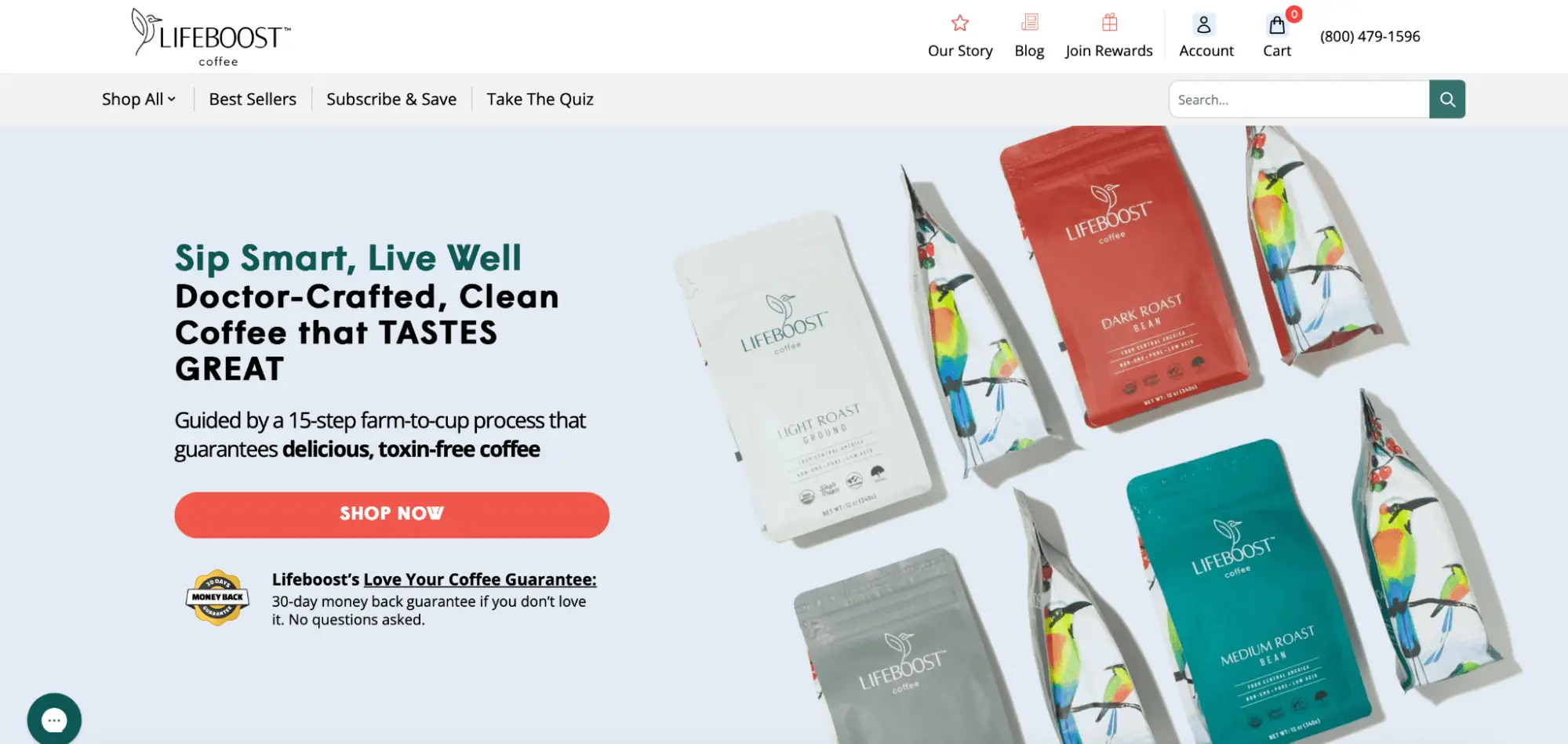
Why does landing page experience matter?
A good landing page experience is critical to a high Google Ads Quality Score because it reflects the page’s ability to deliver what the ad promises, thereby showing relevance to the user’s search intent.
When users click an ad and arrive at a landing page that is easy to navigate, provides the expected information, and facilitates a smooth path to conversion, Google interprets this as a strong user experience.
This positive experience can lead to longer visit durations, lower bounce rates, and higher conversion rates, signaling to Google that your landing page provides value to visitors.
To put it simply, Quality Score is Google’s way of rating the quality and relevance of both your keywords and PPC ads. Think of it as Google’s confidence check to ensure that you’re providing valuable content to users. This score influences not just how your ad ranks but also how much you pay per click.
Let’s break down the factors that determine Quality Scores and why they matter:
- Ad relevance. Google wants to ensure that your ads and keywords match what users are actually searching for. Relevance is crucial because it guarantees that your ad is serving up the answers to the queries users are asking.
- User experience.This factor focuses on the design and usability of your landing page. Ideally, your landing page should be a welcoming place for users, easy to navigate, and provide relevant and original content, matching exactly what was promised in the ad. It should be straightforward because a happy user is more likely to convert, and Google takes note of that.
- Expected Click-Through Rate (CTR). This predicts how likely it is that your ad will be clicked when shown. Google uses your past CTR performance as an indicator of how enticing your ad is to search users. If they’re clicking often, it’s a good sign your ad is appealing and relevant to what they want to find.
By refining each of these factors—you make sure your ads and keywords are relevant, offer a satisfying user experience on your landing page, and are optimized for a high CTR—you’re increasing your chances of creating successful campaigns that appeal to both Google and your intended audience.
Plus, a better Quality Score can also lead to lower costs and better ad positions, enabling you to reach more people without stretching your budget. It’s about being smart with your ads and creating the best possible journey for those who click them.
The attributes that make a good landing page experience
One-on-one message match
The match-up between your ad’s message and your landing page content signals to your website visitors that they’re in the right place and that you’re sticking to your word
Wall Street Journal ads and landing page have a matching message advertising an advantageous weekly subscription price for this news outlet.

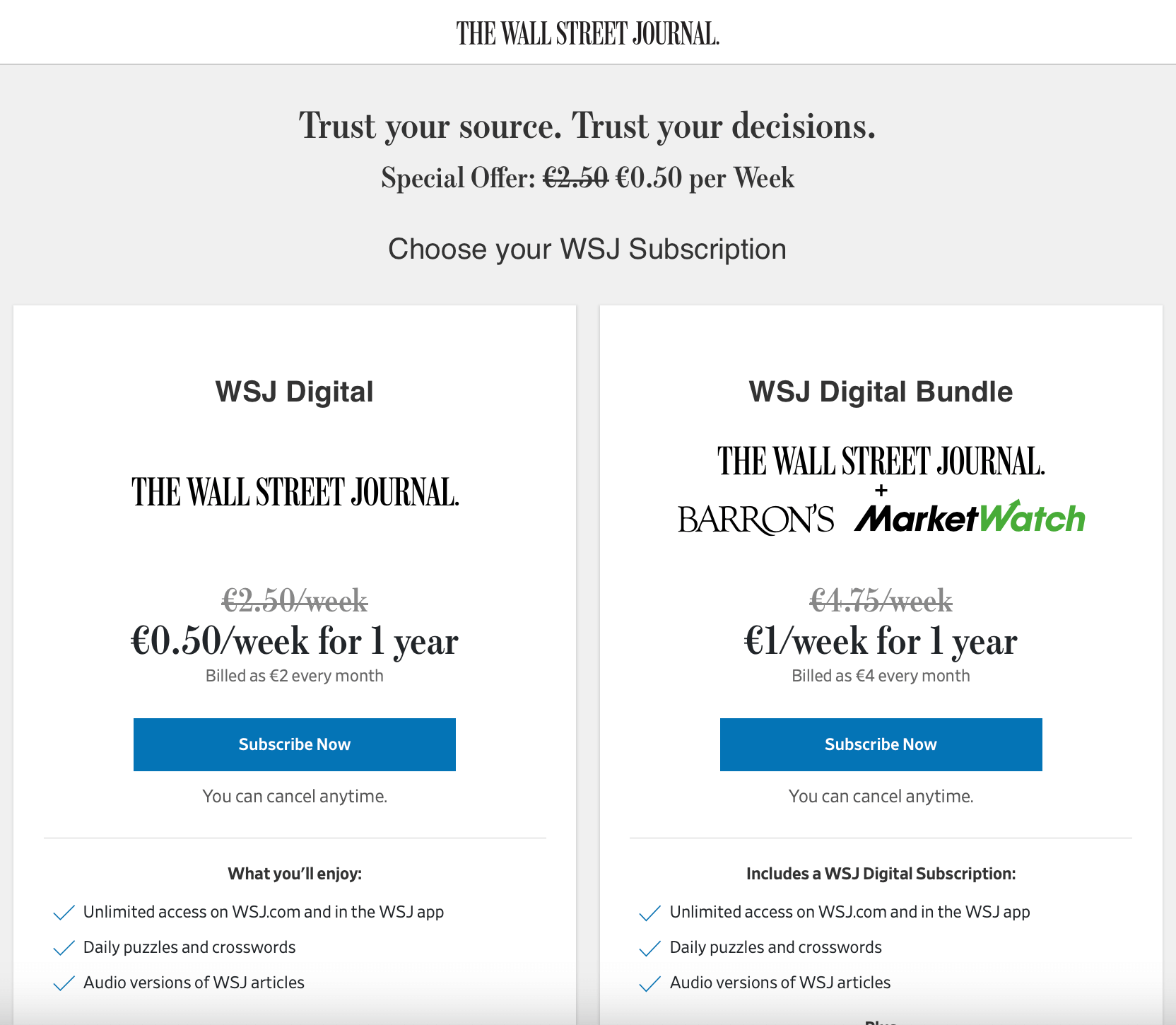
Clear and compelling headline
Using clear and compelling headlines can intrigue first-time website visitors to look into the products and services you’re offering.
Mini Cooper, a luxury car brand, uses a catchy headline in the hero section to advertise its first all-electric MINI Aceman. The wordplay in the sentence reflects the flamboyant vibe of the new car model and makes you want to click to learn more.
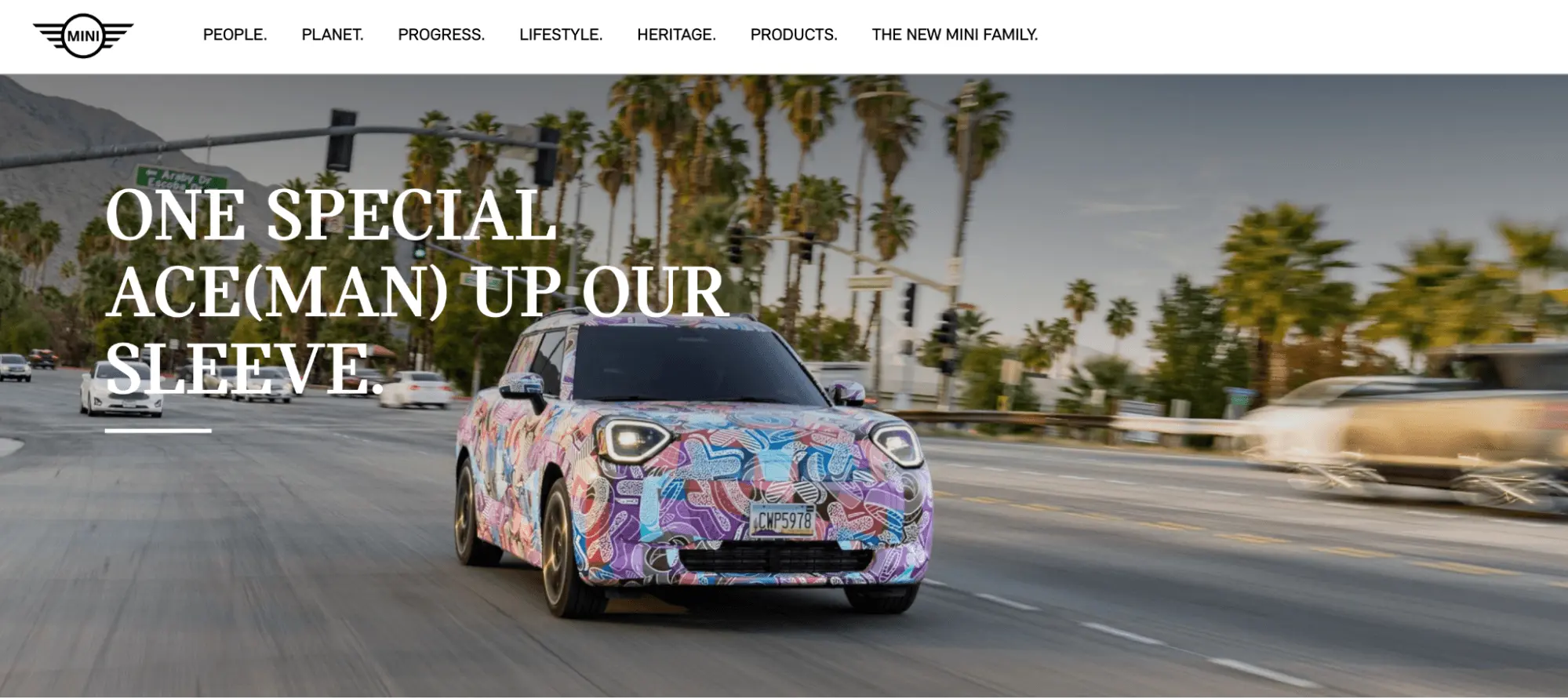
A visually appealing and relevant hero image
The latest Adidas campaign dedicated to Mothers Day shows a diverse female group dressed in Adidas, helping the user visualize what it would look like to treat their mother to a gift she’ll love.

Persuasive copy
Your landing page copy can be the decisive factor between a user bouncing or them converting on the page. For instance, Dropbox Backup appeals to human emotions with its prominent tagline, implying the work-life balance as its unique selling point. The copy supports this emotional statement with an explanation highlighting the practical side of the offer.
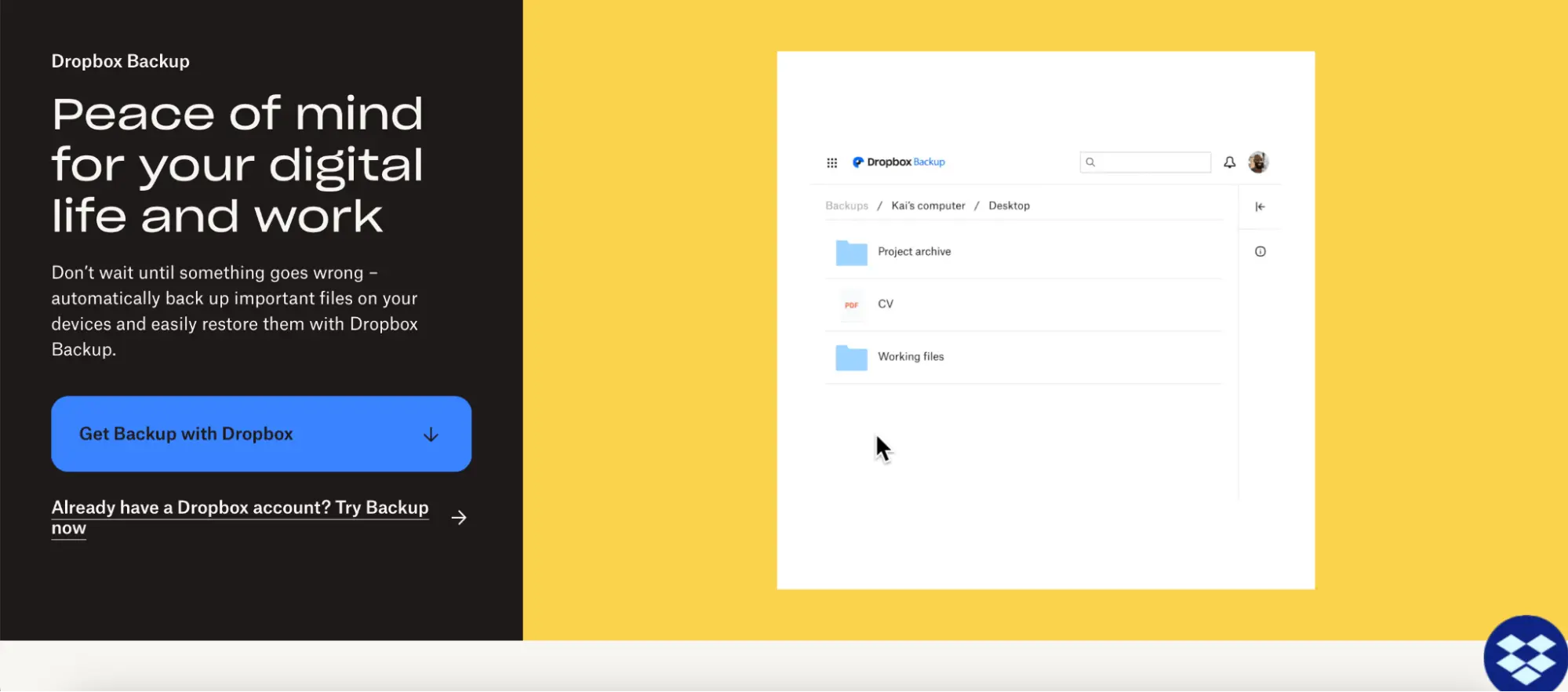
Product features and benefits
Showcasing the features and benefits increases the odds of your potential customers visualizing their lives being improved by your product and clicking the CTA button. .
The airSlate page groups the platform’s product features into easy to navigate tabs so visitors get to know the tool’s capabilities and what they’ll get once they sign up.
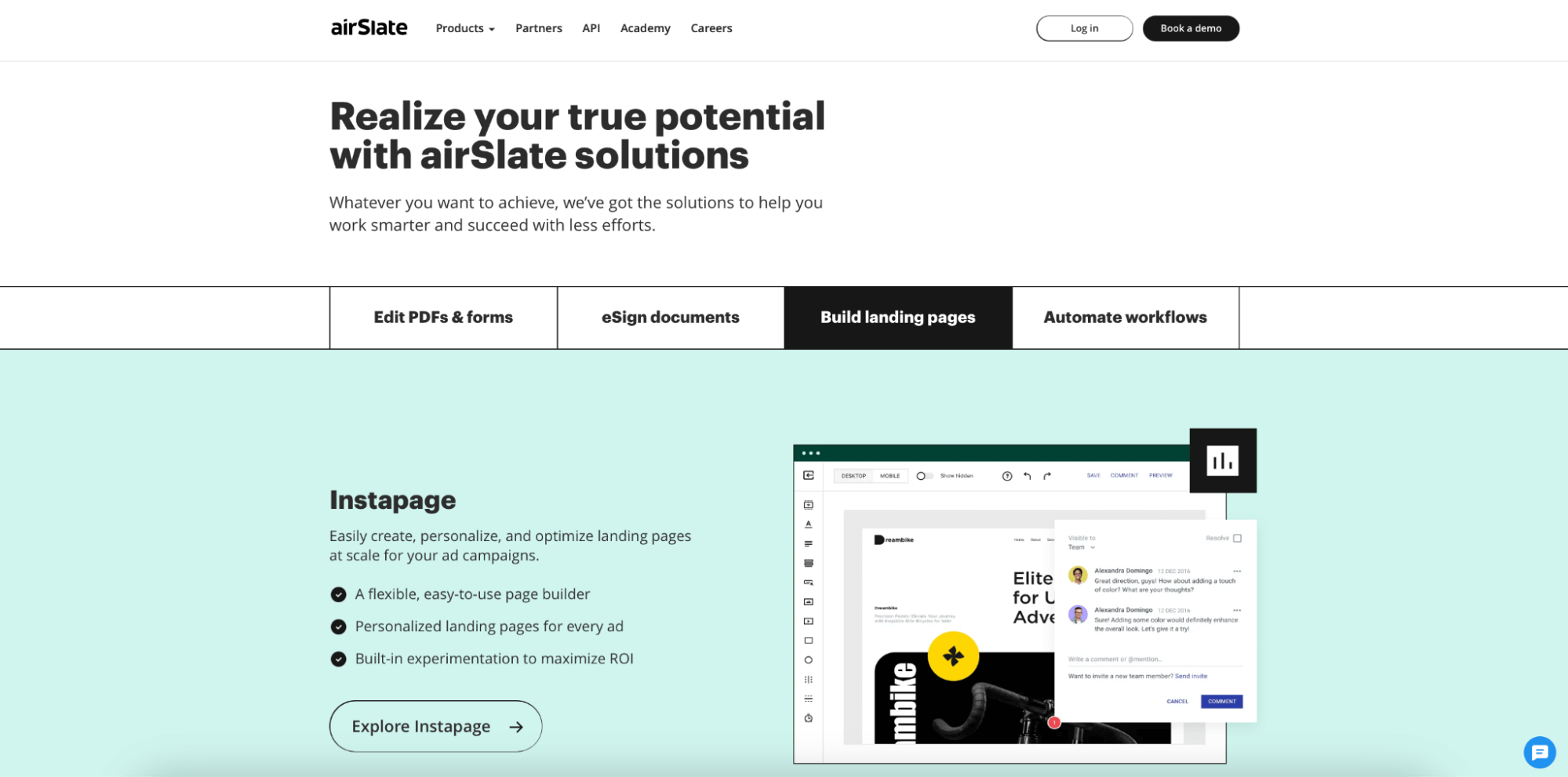
Strong call-to-action
Craft an engaging call-to-action (CTA) that guides visitors precisely on what you want them to do next. Choose words that inspire action and instill urgency to encourage visitors to take the next step.
FluffCo’s CTA button copy reiterates the 20% discount and urges people to shop now and save money.
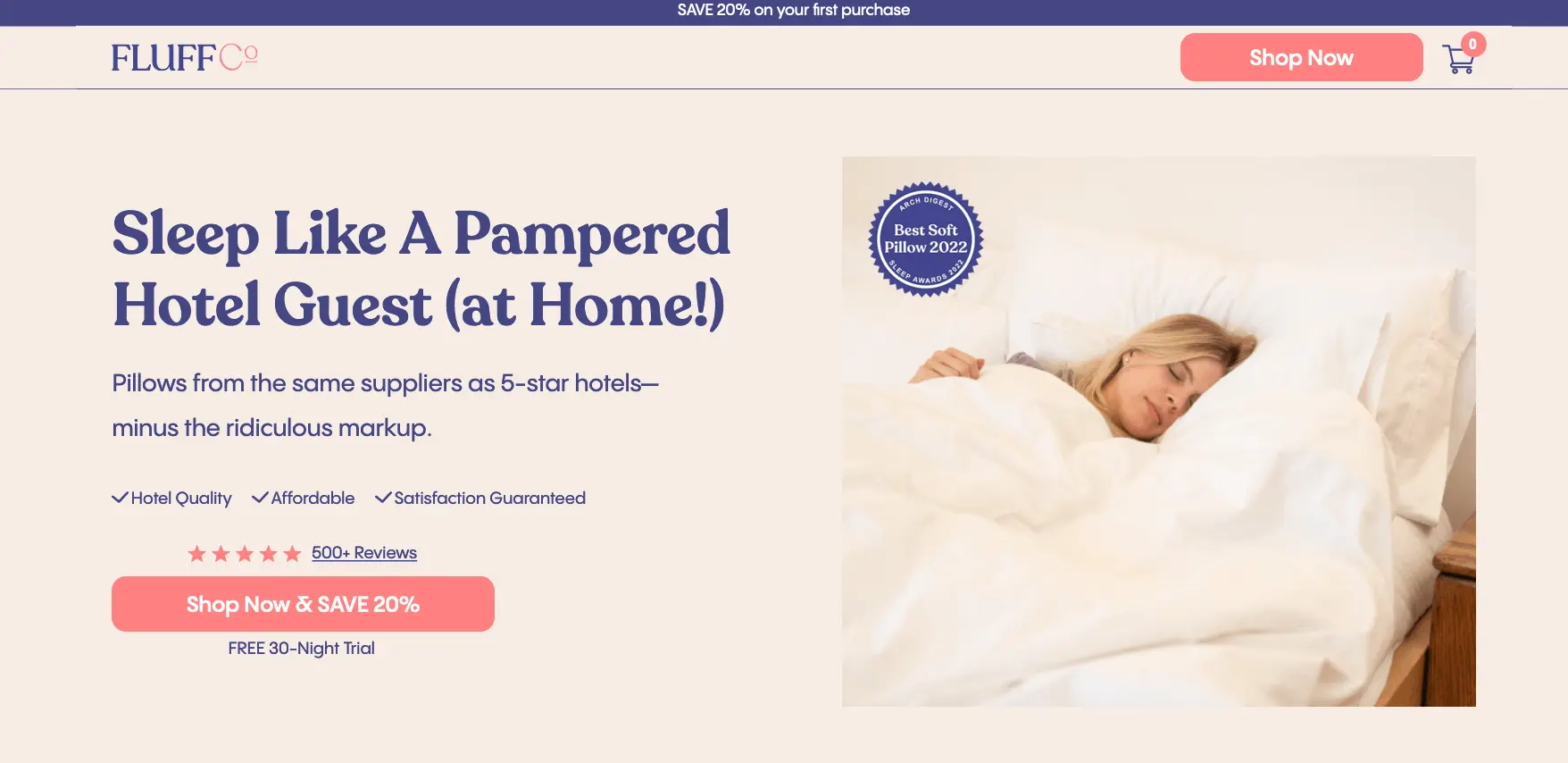
Mobile responsiveness
Since the lion’s share of traffic comes from mobile devices, a landing page must be mobile-friendly and have fast loading times.
Using AMP and Google PageSpeed Insights, you can optimize your pages to load faster and deliver a better landing page experience, allowing them to get higher Google rankings.
For instance, the Good American page is fully mobile-responsive, which allows the hero section video to render perfectly on any screen or device.
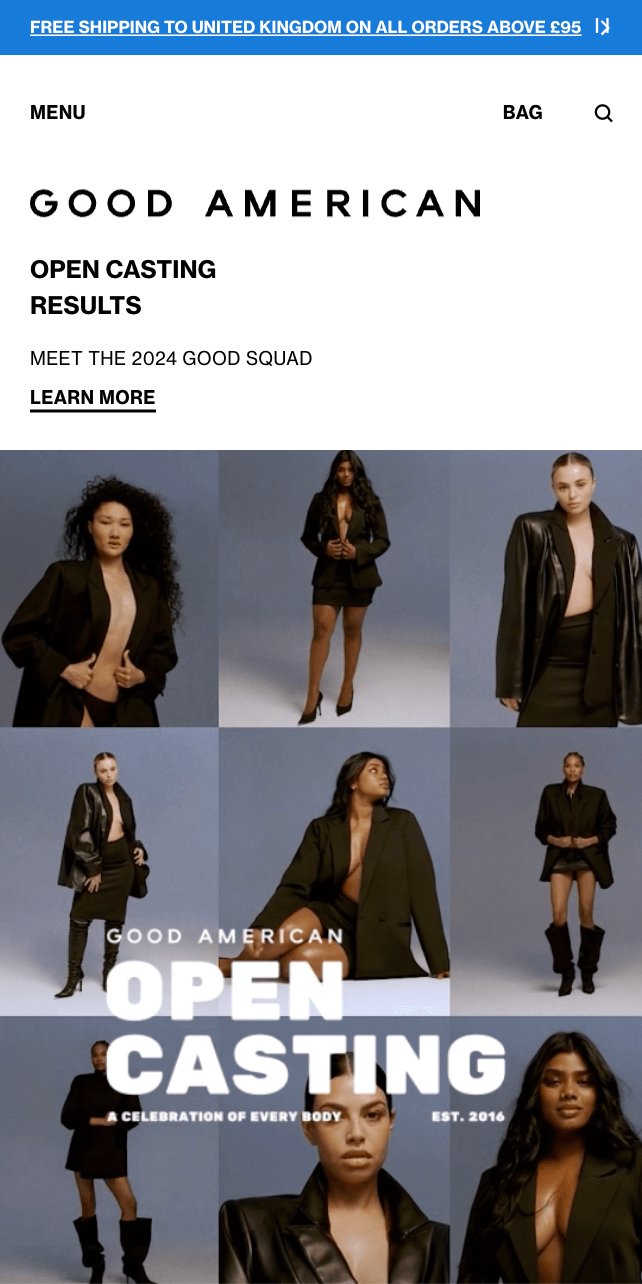
Social proof and trust signals
You might be a stellar marketer, but people tend to trust real people more when it comes to what your product can do. That’s why user-generated content is getting so much traction these days.
Trust signals, such as customer testimonials, reviews, and quotes that come from individuals or businesses who love your product or service can become a game-changer.
ClickUp, a business productivity tool, uses customer stories and quotes to prove its value.
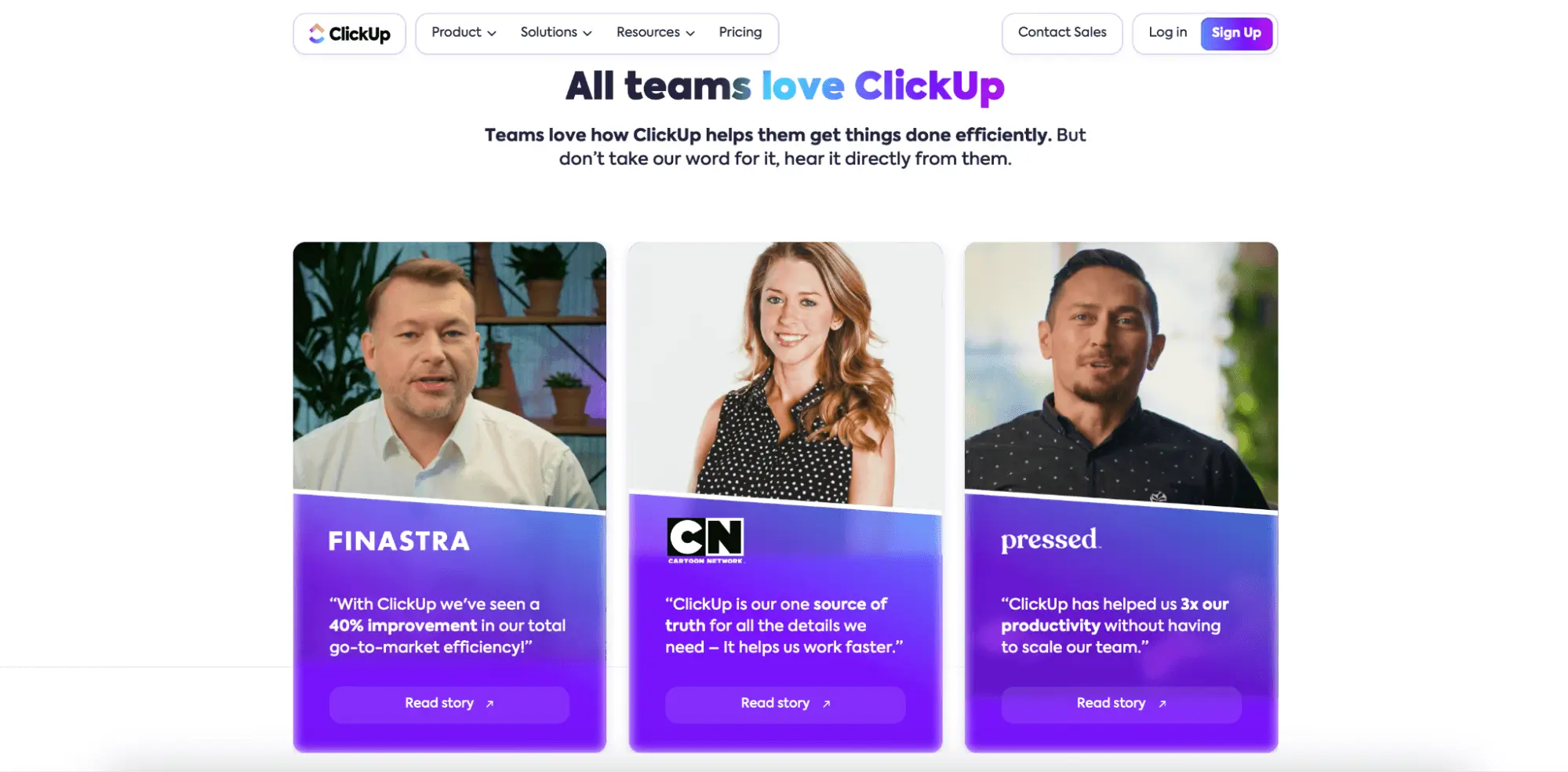
A/B testing and optimization
A/B testing and optimization can help you significantly improve your landing page experience. By experimenting with two versions of a page, you get to see which elements—headlines, images, or CTAs—resonate best with your audience.
As you optimize through testing, you’re fine-tuning your landing page based on real feedback from visitor interactions. Crafting a tailor-made experience will make people more likely to stick around, engage, and eventually convert.
Monday.com ran an A/B test on their homepage to learn if changing the shape of specific elements on the page from circle to square will drive more people to click on the tags. Eventually, version 1 one won, proving that users preferred more square forms.
How to find your Google landing page experience score
1. Sign in to your Google Ads account.
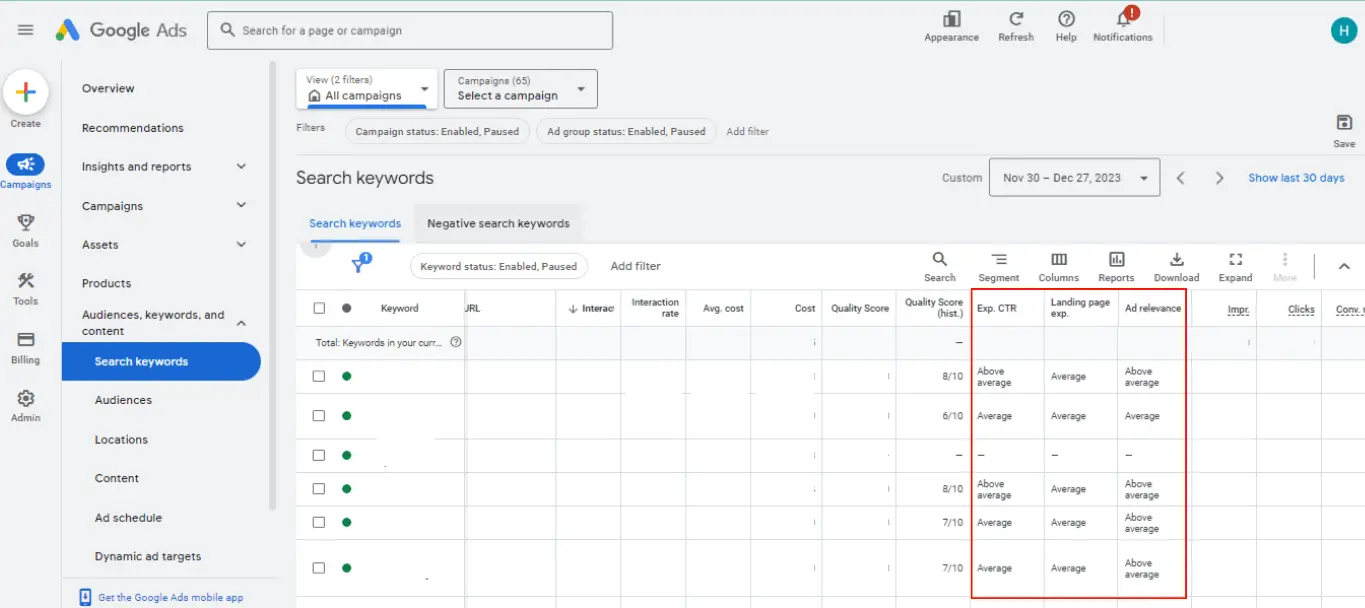
2. From the page menu on the left, click Campaigns -> Audiences, keywords, and content -> Search keywords.
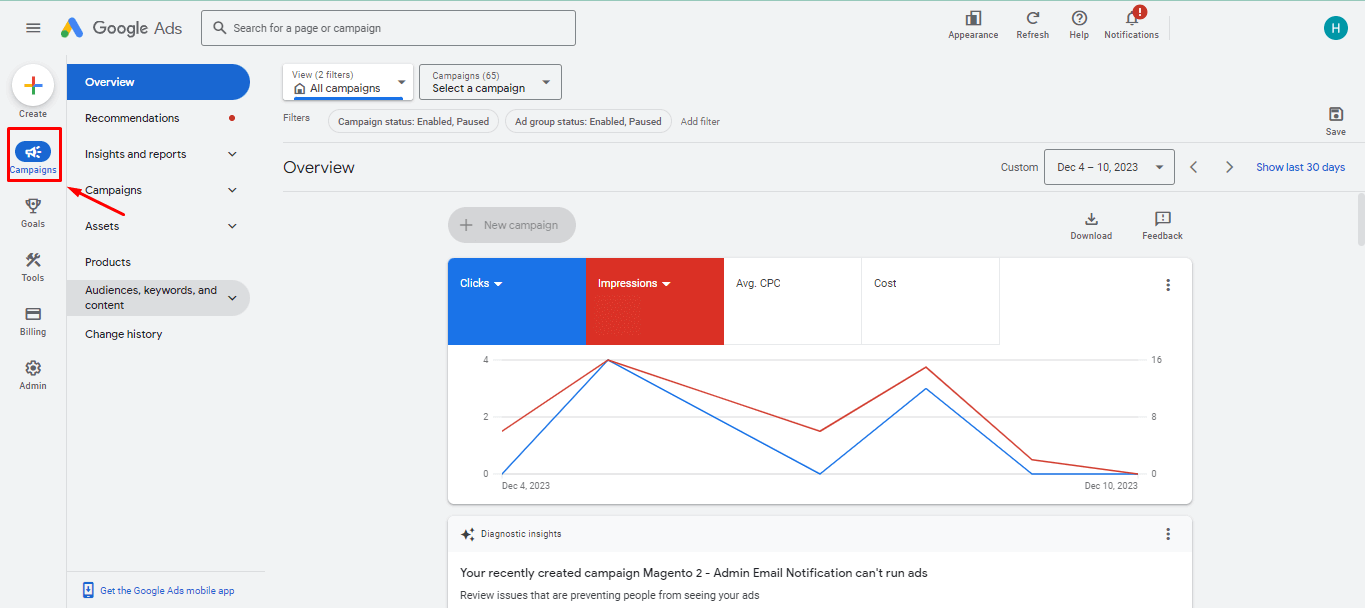
3. Click the Columns icon above the table.
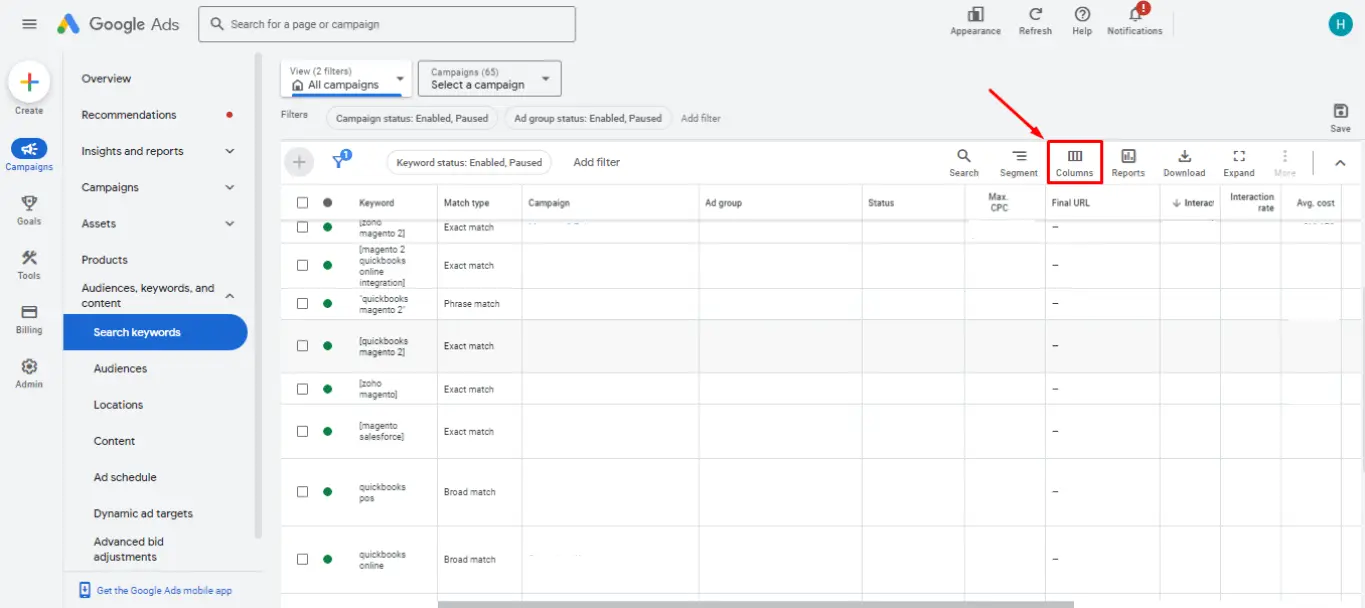
4. Click Quality Score to expand the section. To see the current Quality Score and its component statuses, select the checkboxes next to the metrics you want.
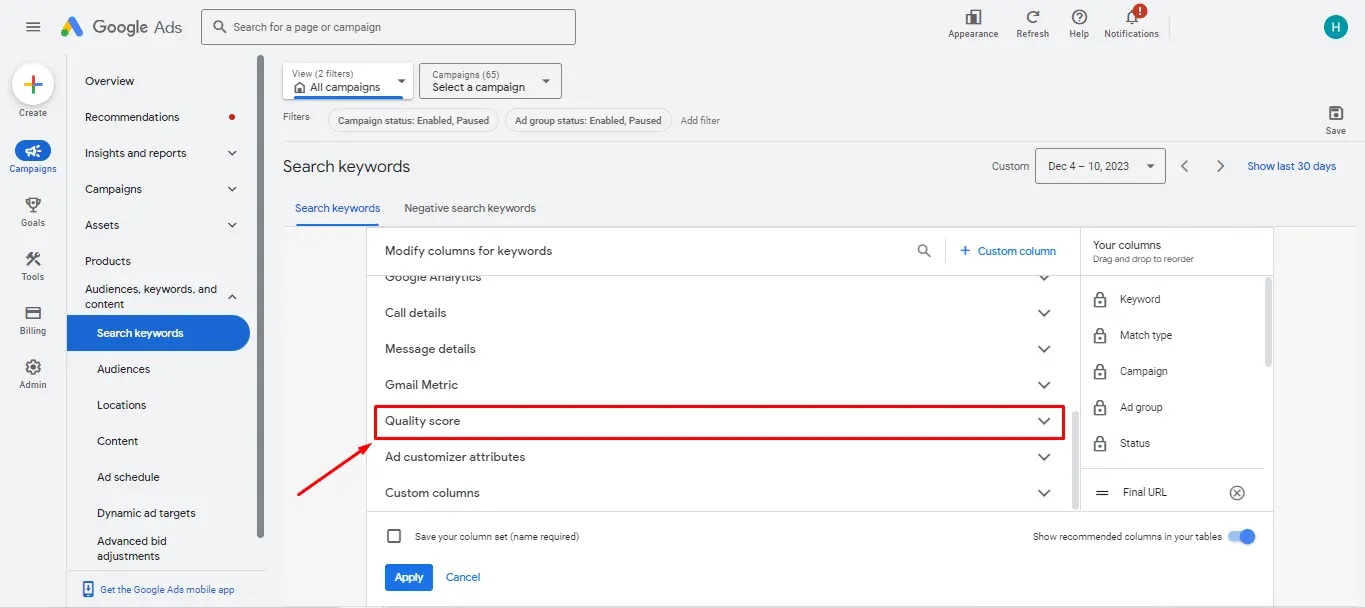
5. Quality scores for previous reporting periods are labeled “(hist)”. You can see the change in daily scores by segmenting your table by day.
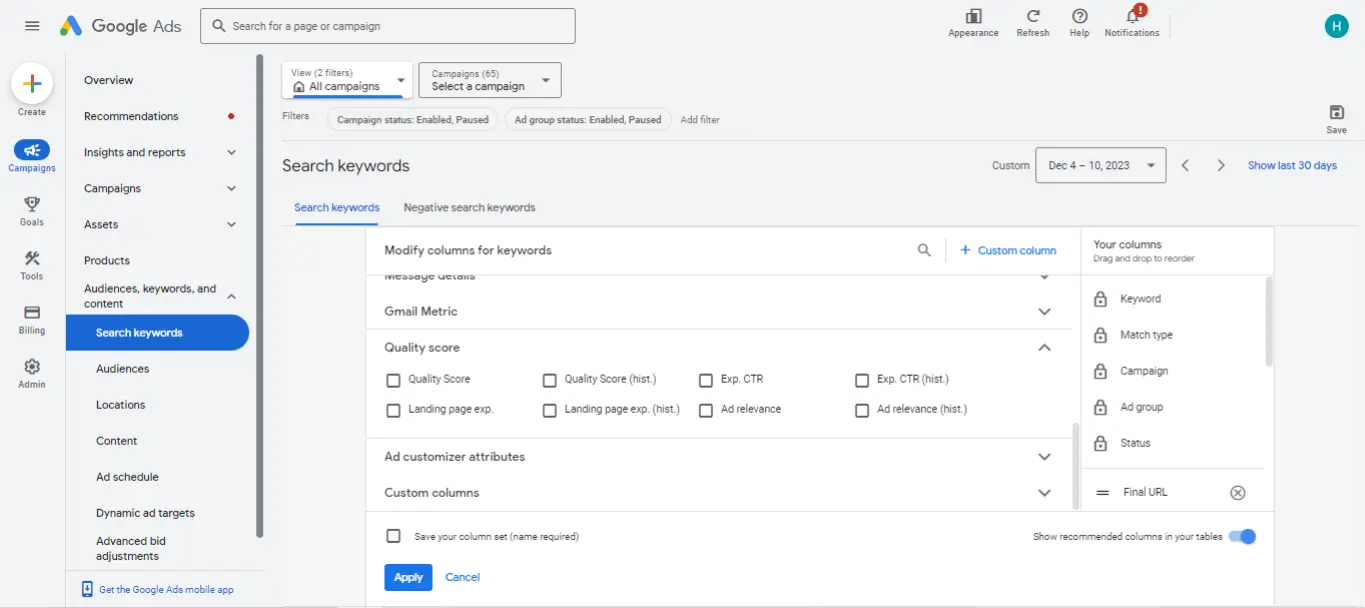
6. Click Apply. You’ll now see these columns in the statistics table.
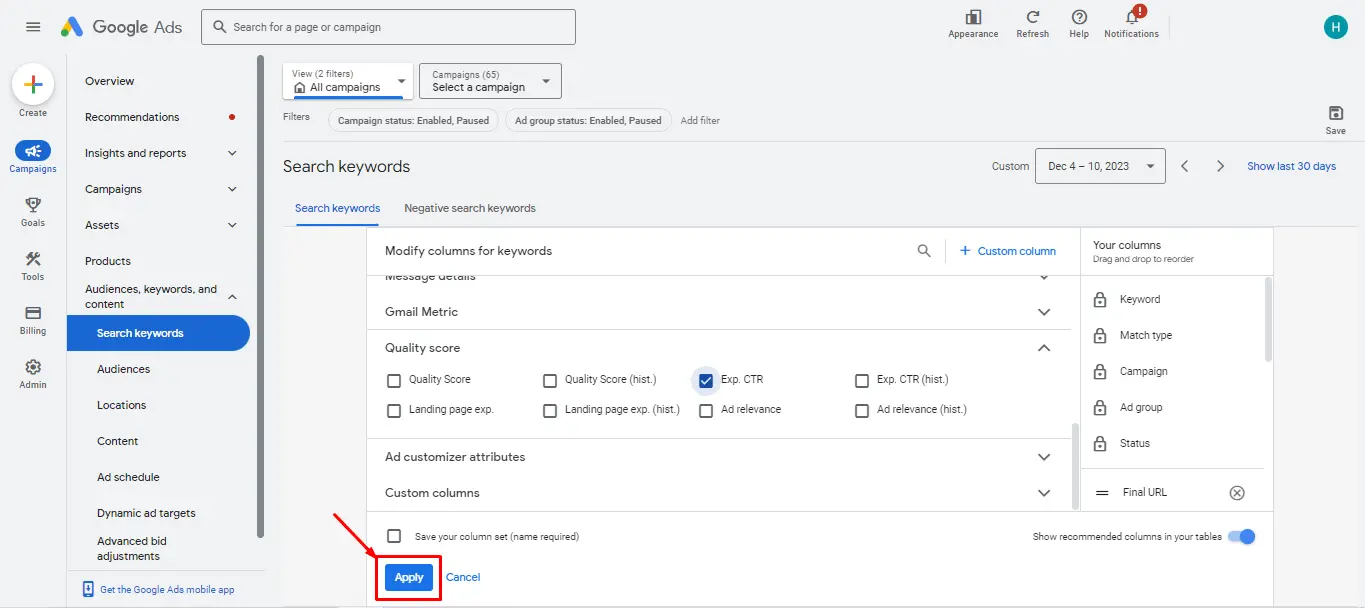
Create stellar landing page experiences with Instapage
Landing page experience is a critical factor influencing your Google Ads Quality Score, affecting your ad performance and cost. If Google concludes that your landing page experience is poor, it’ll be less likely to show your ads, leading to fewer conversions.
Using Instapage helps enhance your landing page experience, resulting in more effective ad campaigns and better ROAS. Instapage facilitates more targeted ad campaigns by helping you optimize landing pages based on data-backed insights, conduct in-app A/B testing, and gain insights from on-page behavior analytics.
Instapage AdMap® allows you to connect your Google Ads search campaigns with their dedicated landing pages. Using AdMap®, you can not only visualize your campaign structure and landing page connections, but also manage those connections directly in Instapage.
AdMap® ensures that you deliver one specific experience for each ad that you have active, in order to take each target audience of your campaign through a fully personalized funnel. Click to learn more about how to use Instapage AdMap®.
1. Access AdMap® from your Instapage dashboard on the left-hand side menu.
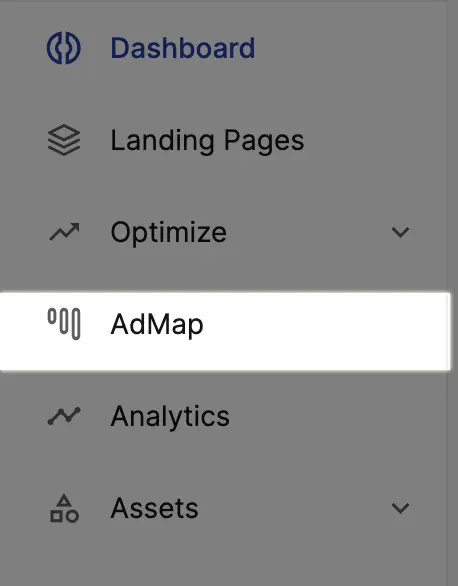
2. Click Connect Ad Account or from the Integrations page to connect your Google Ads account to your Instapage workspace.
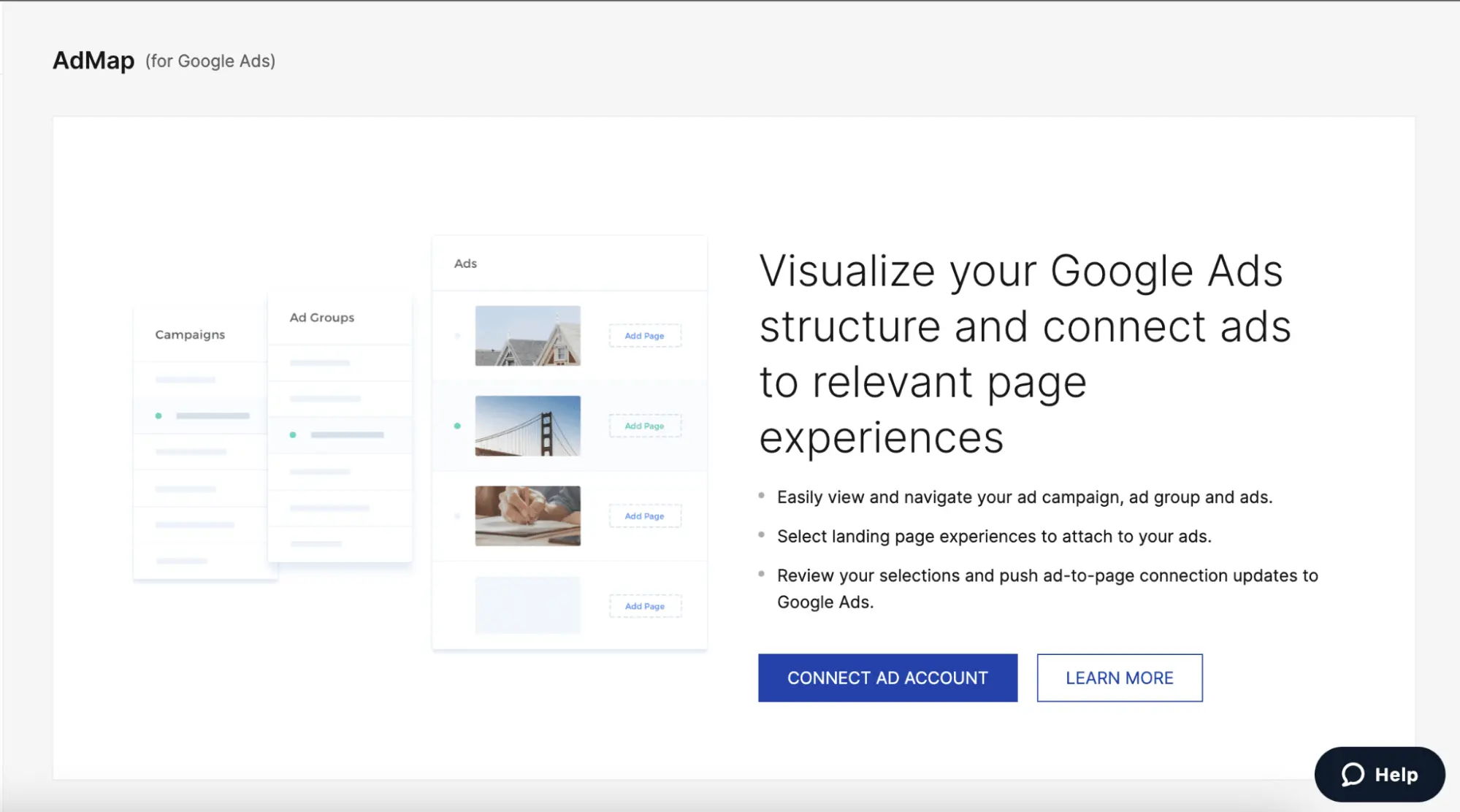
3. Once finished, your Google Ads campaigns will be automatically imported into AdMap and you’ll be able to access each individual ad by clicking on them to open Ad Groups. You’ll be able to see the number of clicks and the cost on all three levels (ad, ad group, and ad campaign) for the last 30 days as a default.
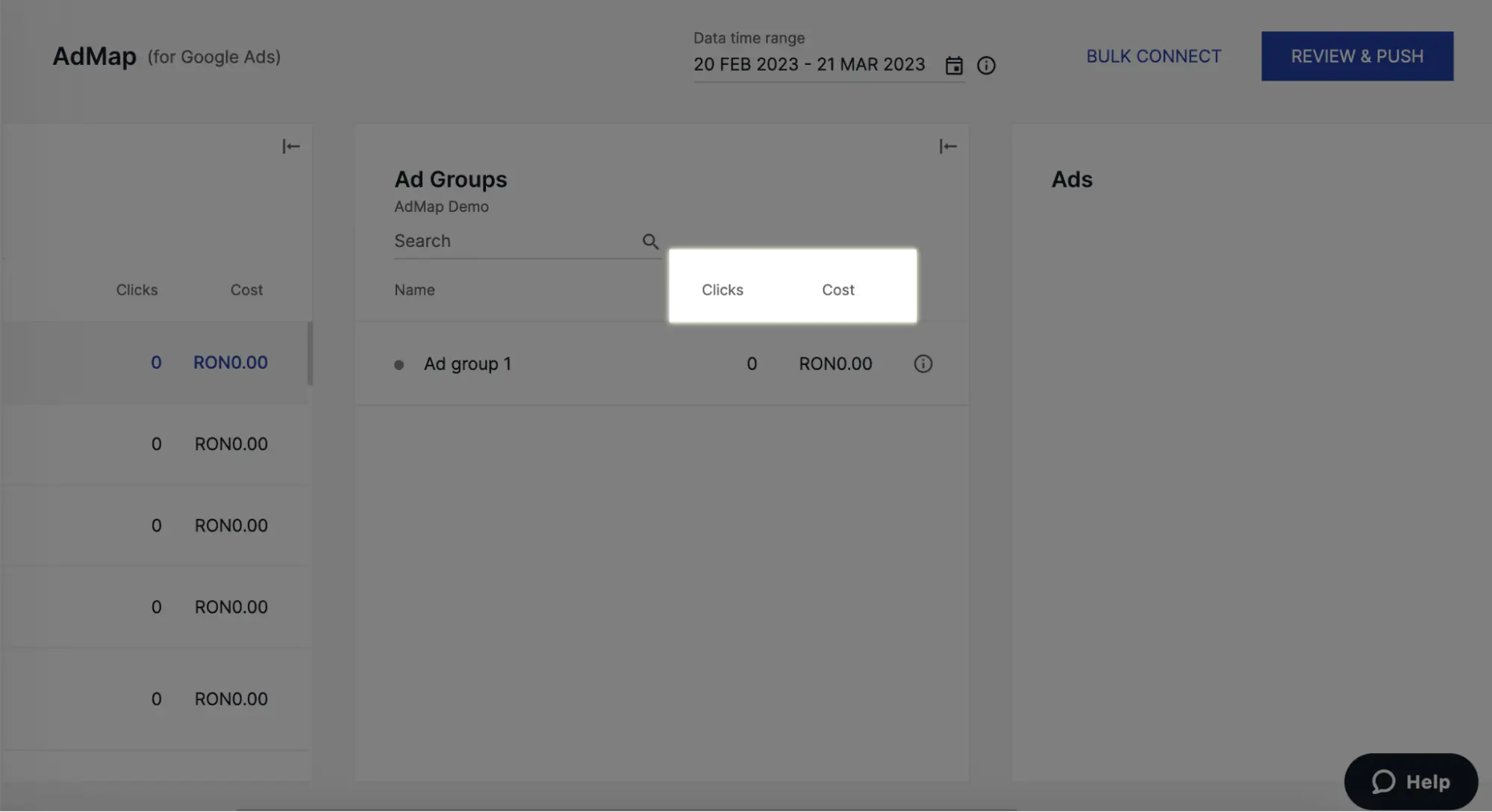
4. To connect an experience to a specific ad, select it and then click the Add Experience button on the right.
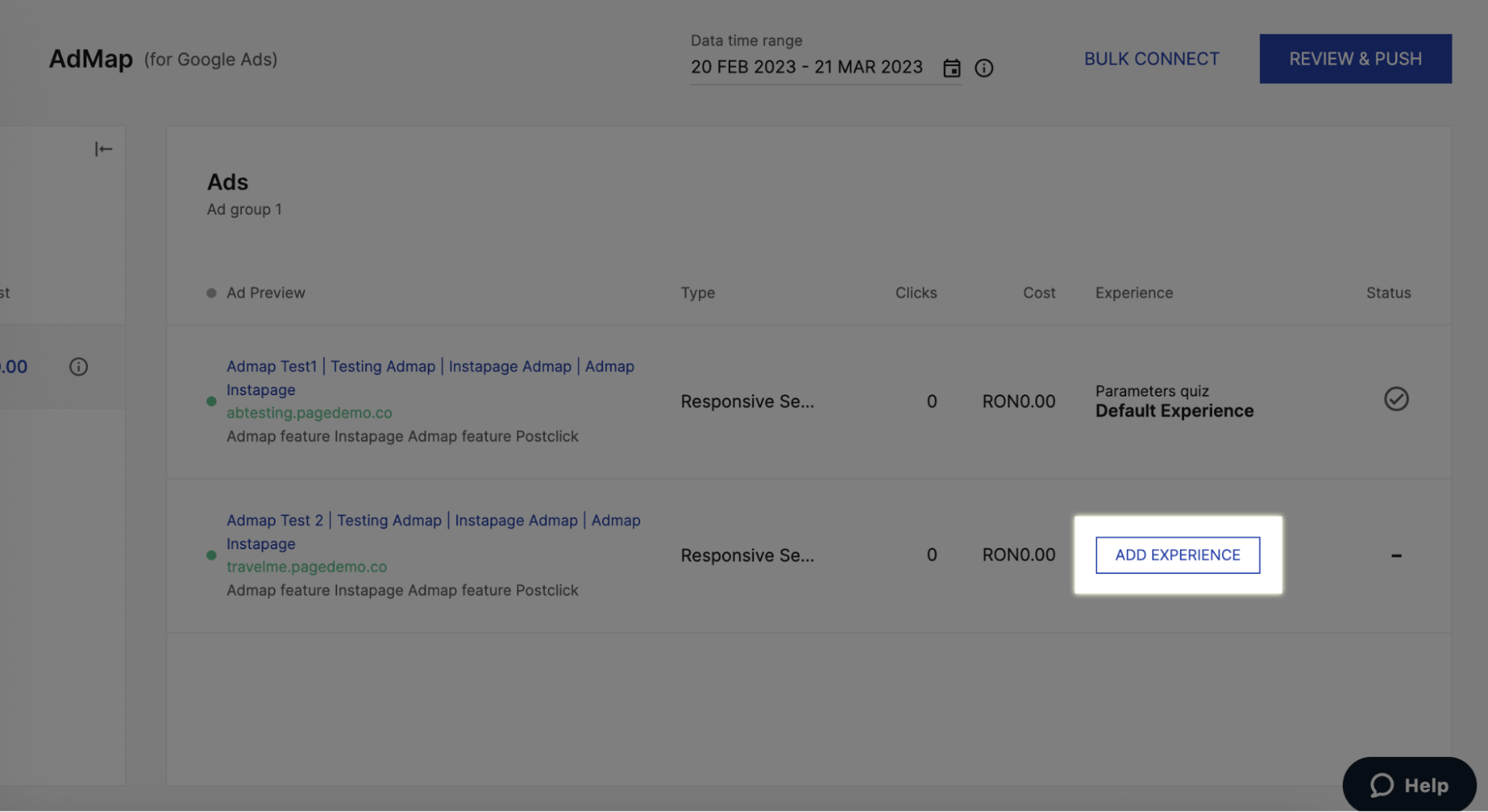
After that, choose a group, page, and the experience matching your ad.
You can also choose to create a new page or a new experience for an existing page.
5. When confirmed, you will create a draft connection which is not pushed to Google yet. After making the changes you want in terms of connecting ads to experiences, you can push the changes to Google Ads by clicking the Review & Push button in the top right corner. This will open a confirmation modal showing you which experiences can be pushed and which experiences need to be published first. You cannot push unpublished experiences as they do not have a URL yet.
Elevate your landing page experience and sign up for an Instapage 14-day free trial today.

Try the world's most advanced landing page platform with a risk-free trial.
